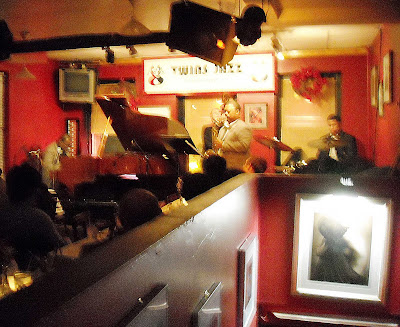
It happened in an early morning drawing class. During a particular pose, the artist looked intensely at the model, took a deep breath and with calm awareness drew a line on the paper. He was surprised to find it was perfectly drawn. That had never happened before as he was a novice at drawing.
He smiled as those around him gathered to admire this perfect line. The teacher stopped teaching the class to study the line and called the others students over to show it to them. As word spread, teachers and students from other classrooms gathered around to admire it also. All seemed to agree that they had never seen a line done with such poise.
Those studying the line suddenly felt happier; more alive. Worries disappeared; confidence was improved; anxieties were relieved while glass jaws, rope burns, paper cuts, blackheads, spring fever, homesickness, halitosis, warts, the heebie-jeebies, shyness, unexplained weeping, and xacto-knife wounds were all mysteriously cured.
As word of the line passed from student to student, then from artist to artist, it became the number one discussion in the art scene and at art parties. Photos of the line were scanned, faxed, emailed, made into posters and appeared on billboards. It was featured on the six o’clock news. Famous artists soon began to refer to the line as “The Line”.
Novelists incorporated The Line into their books. A famous author penned a pivotal work titled “The Perfect Line” which went on to become a bestselling novel. The novel was adapted to a one act play which was then made into a Broadway musical which gave way to a major opera called “La Line”. This made the Italians very happy.
It was soon found that The Line enabled people to sleep peacefully through the night (without snoring), charm cobras, leap buildings in a single bound, acquire untold wealth and speak fluent Swahili. They also gained the ability to compose complex jazz melodies while walking in the park.
The Line went on to win the Nobel Peace Prize, a Kennedy Center Honor, got a grant from the National Endowment for the Arts and received an Oscar for best supporting actress. Endangered species began to reproduce rapidly; rescuing them from extinction. The lamb lay next to the lion and leprechauns were seen riding on unicorns. The sun always shined; the plants were always watered; the dog was always walked; the hole is the ozone was closed.
All creatures on the earth sang along to the Music of the Spheres; Gabriel blew his horn and the Sirens chanted hallelujah! Energy became unlimited and non-polluting; the Four Horsemen of the Apocalypse got off their horses to study The Line…and….
Packing up his art supplies after the class the student remarked to himself, “I sure wish I was better at this art stuff…”







